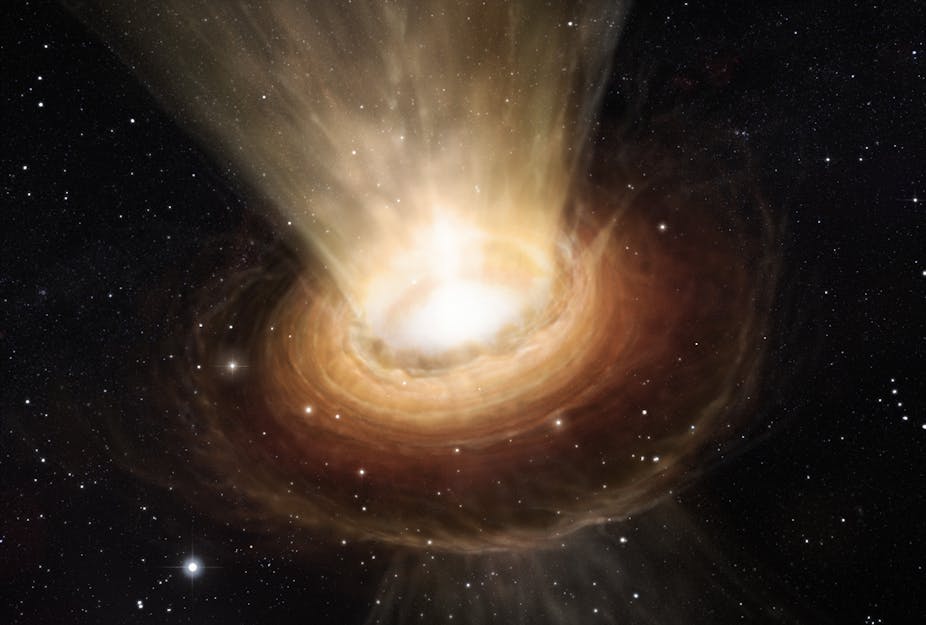Matter escaping from the clutches of mysterious black holes may be responsible for forming stars, according to new research that explores how galaxies are formed.
Much has been learnt about black holes – which lurk at the centre of all large galaxies and suck up anything in their vicinity – over the past two decades. Yet the phenomena remain largely unexplained.
Now, scientists at the University of Durham have discovered that as a black hole fed on the surrounding interstellar matter, some gas and dust was actually being ejected from above and below it.
The team found that energy coming from matter that fell into the hole created a galactic “wind”, which blew some of the converging gas and dust out into space. The researchers believe this gas and dust may well have gone on to form stars.
“Every supermassive black hole - including the one at the centre of the Milky Way - probably underwent a similar phase of growth at some point in its history,” said Poshak Gandhi, of the international team.
Black holes are very heavy and dense. This gives them immense gravitational pull - hundreds to millions of times greater than stars. They get their name because even light, the fastest-travelling thing in the universe, cannot reach the escape velocity needed to resist a black hole’s gravitational pull.
Since they have almost no volume, and do not give off light, black holes cannot be observed directly. “But because of their great mass they interact with other bodies in space, and we can observe these interactions,” explained Paul Crowther of the University of Sheffield.
When astronomers observe a star moving around a central point, they can tell from the weight and speed of the star whether it is orbiting a black hole.
Close to galaxies there are always small amounts of hydrogen gas and cosmic dust (grains of graphite and silicate) floating around. All that gets pulled towards black holes, forming what would look like water draining from a bathtub. This is what the Durham team was able to observe.
The dust particles and gas form doughnut-shaped rings around black holes, which gradually feeds on the matter surrounding it and grows in mass. But before being drawn into the hole, this matter heats up and gives off shining light, which astronomers can see using telescopes.
Poshak Gandhi and colleagues at the University of Durham have been studying supermassive black holes for some years. The one they looked at in their paper published in The Astrophysical Journal, is in a galaxy called NGC3783, which is 150 million light years away from earth. The black hole is estimated to weigh about 10 million times the star Earth circles.
While studying NGC3783, from an observatory on top of a mountain in Chile’s Atacama Desert, the researchers observed the gas and dust being expelled. They used a combination of four powerful telescopes, eight meters in diameter each.
The energy coming from matter that fell into the hole was creating a wind, which blew some of the converging gas and dust out into space, Gandhi believes. The power of this wind must have been incredible to propel matter away from the black hole.

